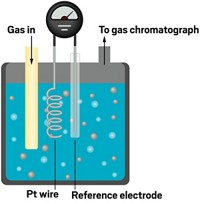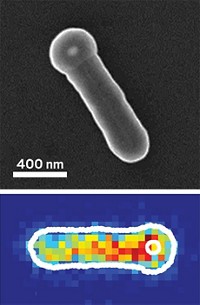Advertisement
Grab your lab coat. Let's get started
Welcome!
Welcome!
Create an account below to get 6 C&EN articles per month, receive newsletters and more - all free.
It seems this is your first time logging in online. Please enter the following information to continue.
As an ACS member you automatically get access to this site. All we need is few more details to create your reading experience.
Not you? Sign in with a different account.
Not you? Sign in with a different account.
ERROR 1
ERROR 1
ERROR 2
ERROR 2
ERROR 2
ERROR 2
ERROR 2
Password and Confirm password must match.
If you have an ACS member number, please enter it here so we can link this account to your membership. (optional)
ERROR 2
ACS values your privacy. By submitting your information, you are gaining access to C&EN and subscribing to our weekly newsletter. We use the information you provide to make your reading experience better, and we will never sell your data to third party members.
Catalysis
Nanoparticle catalysts communicate across distances
Reactions at one active site influence reactions at other sites within the same particle and between nearby particles
by Mitch Jacoby
March 30, 2018
| A version of this story appeared in
Volume 96, Issue 14

Nanoparticle catalysts obviously can’t talk but a new study suggests they’ve found a way to communicate with each other. By using a method that tracks single-molecule reactions on individual nanoparticles, researchers have shown that catalytic reactions occurring at one active site on a particle can influence reactions occurring at another site (Nat. Chem. 2018,DOI: 10.1038/s41557-018-0022-y). This finding broadens chemists’ understanding of catalysis and may lead to ways of improving catalyst performance.
Researchers have long known about so-called allosteric effects in enzymes. This type of cooperative chemical communication, in which a molecule binding at one site influences chemical activity at another site on the enzyme, is driven by structural and bonding changes and affects the function of the biocatalysts.
To determine whether solid nanoparticle catalysts exhibit a related type of chemical communication, a team led by Peng Chen of Cornell University scrutinized nanoparticles made of either gold or palladium as the materials mediated various types of model catalytic reactions. The reactions converted nonfluorescent reactants to highly fluorescent products, allowing the researchers to watch the process unfold using high-resolution fluorescence microscopy methods.

By analyzing single-molecule data pooled from a large number of particles, the team found that a catalytic reaction that occurred at one active site can affect the probability of a reaction occurring at another site on the same particle or on a nearby particle.
Specifically, the researchers observed that within single particles, this communication, in which a reaction at one site tends to be followed by a reaction at a given nearby site, can span hundreds of nanometers and tens of seconds. The correlation decreases exponentially with increasing separation between sites and increasing time between pairs of reactions. The researchers also observed communication over many micrometers from one gold particle to another, but not between gold and palladium particles.
Based on data collected during further experiments, including some that involved applied voltages, the team proposes that interparticle communication is driven by diffusion of negatively charged product molecules that promote reactions on active sites on other particles. In contrast, intraparticle communication likely proceeds via migration of positively charged electron vacancies known as holes.
“These are intriguing findings,” says Prashant K. Jain, a catalysis specialist at the University of Illinois, Urbana-Champaign. It is quite striking that such cooperativity is not limited to adjacent or nearby sites but involves relatively distant sites and even well separated nanoparticles, he remarks.
“I wonder if communication between active sites separated by a few hundred nanometers is a general feature of heterogeneous catalysts.”
It would be interesting, Jain says, to learn if during multistep reactions, a product formed at one site diffuses to another, where it is transformed to a different species that can no longer react at the first site. Detailed answers to those types of questions could help chemists tailor catalysts to improve product selectivity.
This article has been translated into Spanish by Divulgame.org and can be found here.





Join the conversation
Contact the reporter
Submit a Letter to the Editor for publication
Engage with us on Twitter